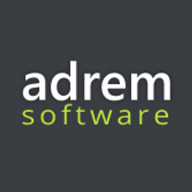

NetCrunch and New Relic compete in the network and application monitoring domains. New Relic has the upper hand in application monitoring due to advanced capabilities, while NetCrunch is strong in network monitoring, especially appealing to budget-conscious organizations.
Features: NetCrunch provides robust visualization tools, network protocol support, and intuitive alerting mechanisms. New Relic offers deep insights and analytics powered by AI, real-time cloud application monitoring, and advanced application performance management.
Room for Improvement: NetCrunch could improve by enhancing its cloud monitoring capabilities, offering more integration options, and expanding its analytical features. New Relic may benefit from simplifying its configuration process, reducing costs, and improving its network monitoring capabilities.
Ease of Deployment and Customer Service: NetCrunch offers a streamlined deployment process with dedicated customer support, integrating well with existing IT setups. New Relic, with its SaaS model, allows for quick setup but may need more configuration, providing extensive documentation and community resources.
Pricing and ROI: NetCrunch offers a more affordable entry point with flexible pricing, delivering significant ROI for small to medium-sized enterprises. New Relic is priced at a premium, offering higher ROI for organizations in need of advanced application monitoring capabilities.
| Product | Market Share (%) |
|---|---|
| New Relic | 1.8% |
| NetCrunch | 0.4% |
| Other | 97.8% |

| Company Size | Count |
|---|---|
| Small Business | 65 |
| Midsize Enterprise | 50 |
| Large Enterprise | 61 |
NetCrunch is an all-in-one network monitoring platform designed for hybrid IT environments, offering comprehensive agentless monitoring of thousands of devices across different technologies and platforms.
NetCrunch streamlines network management with automated discovery, configuration, and monitoring through rule-defined policies. It covers monitoring across various environments, providing real-time dashboards, dynamic views, and topology maps. With its versatile features, it supports diverse IT ecosystems efficiently. It offers a node-based license model that enables scalable deployment on-prem, self-hosted in the cloud, or in hybrid settings.
What are NetCrunch's most important features?NetCrunch is implemented across industries like healthcare and finance, ensuring comprehensive monitoring solutions that accommodate specific protocol and compliance requirements. It's tailored for seamless integration into various IT architectures optimizing monitoring capabilities tailored to industry standards.
New Relic offers real-time application monitoring and insight into performance bottlenecks. Its customizable dashboards and APM integration provide efficient operational support, while server performance alerts ensure quick issue detection.
New Relic provides comprehensive monitoring of application performance, tracking bottlenecks across databases and front-end components. Users employ it for server and infrastructure monitoring, as well as analyzing key metrics such as CPU and memory usage. The solution's ability to integrate with tools like PagerDuty enhances incident management capabilities. However, users have expressed a need for improvements in query language simplicity, more detailed historical insights, and better mobile app monitoring support.
What are New Relic's most important features?In industries like e-commerce and financial services, New Relic supports application performance monitoring to enhance user experience and system reliability. Organizations leverage its insights for optimizing performance, particularly in server operations and infrastructure management. Its ability to monitor API failures through synthetic monitoring is crucial for maintaining high service levels.
We monitor all Network Monitoring Software reviews to prevent fraudulent reviews and keep review quality high. We do not post reviews by company employees or direct competitors. We validate each review for authenticity via cross-reference with LinkedIn, and personal follow-up with the reviewer when necessary.